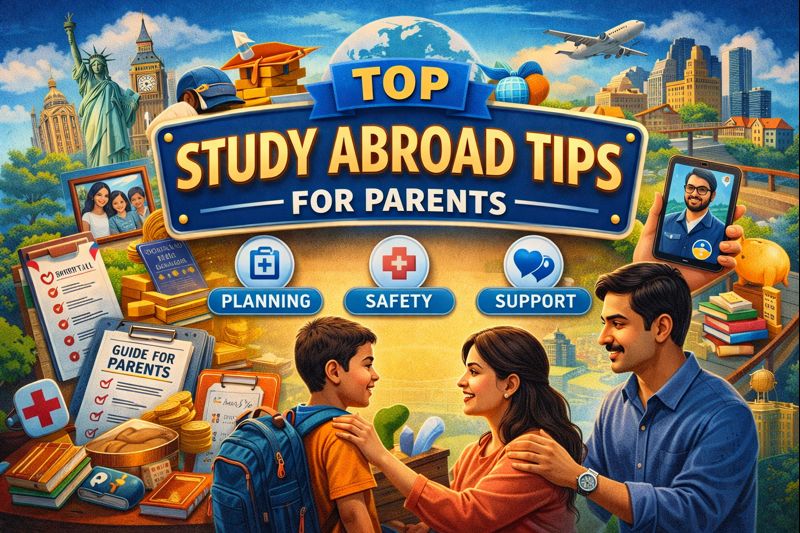An initiative by Canadian Immigration Services, the SDS (Student Direct Stream) is an approach under which visa applications are processed directly and quickly if students want to study in Canada.
What is SDS and Non-SDS? While SDS is an express-entry visa that students apply to study in Canada, non-SDS is a general visa application for everyone to temporarily study, work, or move to Canada.
Continue to read to learn more about what is SDS and non-SDS.
What is the Difference Between SDS and Non-SDS?
In addition to the express-entry vs. general visa distinction, another differentiating factor is that SDS is applicable to specific nations like Peru, China, India, and others. And on the other hand, non-SDS is applicable to all countries.
SDS Document Requirements for Visa Application
- Official academic transcripts that prove that students have scored an aggregate of at least 55% for undergraduate courses
- Evidence of relevant medical tests
- Tuition fee receipts
- Statement of Purpose
- An advanced diploma or Undergraduate degree; to pursue Postgraduate courses, students need a minimum of 50% or above
- Test scores that determine English proficiency; where IELTS scores of at least 6.0 for UG, and 6.5 for PG.
- Visa application fees of $150
- Digital photographs
- Proof of previous work experience
- GIC (Guaranteed Investment Certificate) of $10,000 to cover the cost of living in Canada
Some banks in India that offer GIC include:
- ICICI Bank
- Scotia Bank
- SBI Canada
- Canadian Imperial Bank of Commerce
- HSBC Bank of Canada
Need help securing a loan to cover the cost of living? Turn to FundRight.

11. Offer letters from colleges that fall under SDS
Here are a few colleges that fall under SDS, along with their tuition fees.
Non-SDS Document Requirements for Visa Application
- Test scores that determine English proficiency; where IELTS scores of at least 6.0 for UG, and 6.5 for PG.
- Official academic transcripts that prove that students have scored an aggregate of at least 55% for undergraduate courses
- An advanced diploma or Undergraduate degree; to pursue Postgraduate courses, students need a minimum of 50% or above
- Visa application fees of $150
- Tuition fee receipts
- Evidence of relevant medical tests
- Proof of previous work experience along with the last 3 months’ payslips
- Offer letters from colleges that fall under non-SDS
- Proof of financial funds that cover student loans, bank savings, investments, and so on
- Form 16 or Income Tax Return Documents of the sponsor or candidate
Application Process for SDS and Non-SDS
We’ve learned what is SDS and non-SDS and we’ve also looked at the difference between SDS and non-SDS. Now, let’s look at the application process:
- Visit the IRCC (Immigration Refugee Citizenship) website to fill out the application form either for SDS/Non-SDS based on your eligibility.
- Upload all the relevant scanned copies of documents.
- Pay the application fees and biometric fees.
- After the fee payment, you’ll be sent a link to a biometrics request letter. Necessary information such as photographs and fingerprints must be provided for the biometrics application to begin processing.
- Once your biometrics form is accepted, you could be asked to go through background verification and medical tests.
- Finally, after your SDS/Non-SDS visa is approved, you will receive the following: An Electronic Travel Authorization, a temporary resident visa so you can enter Canada as an International student, and a letter of introduction.
3 Main Reasons to Choose SDS Over Non-SDS
Now that you know the difference between SDS and non-SDS, here are 2 reasons why SDS is better.
- Fast process: As compared to non-SDS, the SDS approach is quite simple, and streamlined. The entire duration shouldn’t take more than 45 days.
- Less documentation: Students applying for visas through the SDS category needn’t present as many documents, whereas while applying through the non-SDS category, students need to present more documents.’
- Higher success rate: Even though the success rates of SDS had gone down in 2020 due to the lockdown, their acceptance rates still remain high. In fact, as per the IRCC’s 2021 report, 71% was the success rate of SDS, while the success rate of non-SDS was just 40%.

Thriving Economy
According to WorldPopulationReview’s 2021 survey, Canada’s unemployment rate was only 6.5%. This is much lesser than the average unemployment rate shared by countries all over the world; that of 10.31%. Canada also ranks #9 in GDP rankings. This makes its economy a brilliant one.
Universal Healthcare
With public health insurance, you won’t have to pay for most healthcare expenses. The taxes that you pay itself would cover all your healthcare expenses.
Safety
This is one of the main reasons why the quality of life in Canada is so great. A trusted portal DailyHive even ranked Canada as the 2nd safest country in the world. Crime rates are the lowest in Canada which means that problems like racism won’t emerge.
Additionally, as per Statista’s 2020 report, Canada ranked #2 in the list of safest countries for LGBT tourists.
Take a look at the report here.
Amazing Vacation Spots
Places like Niagara Falls, Banf, Prince Edward Island, Jasper National Park, and more are breathtaking.
These are just a few of the many reasons to move to Canada! You can turn to GradRight to help you choose the right university, and then find the best loans via FundRight to help you live in Canada comfortably.

Student Visa: Common Interview Questions
Now that you know what is SDS and non-SDS, you’ll need to prepare for your visa interview after the application submission. Since visas do get rejected sometimes, it’s a good idea to plan well in advance.
Ace that interview by preparing for these questions.
How are you doing today?
Be confident when you respond. There’s no need to get nervous since it’s a daily-life question. Simply say “Good, thank you, how are you doing?”
Why did you choose Canada?
Be prepared to explain why you’re not able to find a similar course in your own country. Also, mention your future study plans. And, an added bonus would be mentioning Canada’s world-class teaching facility.
Have you been to Canada before?
Simply answer yes/no. If yes, mention details regarding your previous travel experience including the duration of your stay, the purpose of travel, etc.
Which program will you be studying and why?
Make sure you know when the start and end dates of the program is. Learn what the importance of the course is and mention that to them. You can also link your previous studies and experiences and show them how this course would help you build your career.
Why did you choose that particular university/college?
You should be able to highlight the benefits of studying at that college. Do sufficient research. To check how determined you are to pursue your studies, the Consular Officer might ask you some more questions.
Who is going to cover your expenses in Canada?
Even though you’ve already mentioned this on your visa application form, this question would be asked to just check if the information matches. If you’ve applied for a loan, mention the details of it.
What does your father/mother do?
Tell them the occupations of your parents, and expect the officer to ask further questions to check their income status.
Where do you stay in Canada?
Tell them where you stay and also express your desire to return to India once you’ve completed your course in Canada.
Where will you be staying in Canada?
Mention the address of your stay and also tell them if it’s a temporary residence or whether you intend to live there till the end of your course.
Do you intend to work in Canada?
If your visa allows you to work while you study, you can mention that you would like to work in Canada to support yourself. On the other hand, if your visa doesn’t allow this, let them know you have no plans to work in Canada and that you would return once your course has been completed.
Note that some common reasons for visa refusals include incorrect financial evidence or insufficient funds, inadequate communication skills, or misbehaviour during the interview. Another reason is the inability to confirm if you’ll be returning to India after the course completion.
Frequently Asked Questions
In addition to “what is SDS and non-SDS” and “what is the difference between SDS and non-SDS”, there are a few more FAQs:
Q1. Can you apply for the SDS visa with a PTE score?
No, students need an IELTS score of 6 bands or higher in order to be eligible for an SDS visa.
Q2. Can a Canadian student visa get rejected?
Yes. About 30% of student visa applications get rejected every year. This usually tends to happen if students don’t comply with the rules and regulations or fail to provide documents like IELTS, SOP, financial competency proof, and so on.
Q3. Why are so many immigrants applying for non-SDS over SDS applications?
The reasons could be the following:
- They can’t pay the whole year’s tuition fees in one go.
- They prefer taking the TOEFL or PTE instead of the IELTS test.
- They aren’t able to open a GIC account of 10000 CAD
Q4. Can family members get concurrent processing of visas?
Yes, it’s possible. But only if they make sure to apply at the same time as the primary applicant. As part of family grouping, the family members would need to submit a temporary resident permit for study, work, or residence online.
















